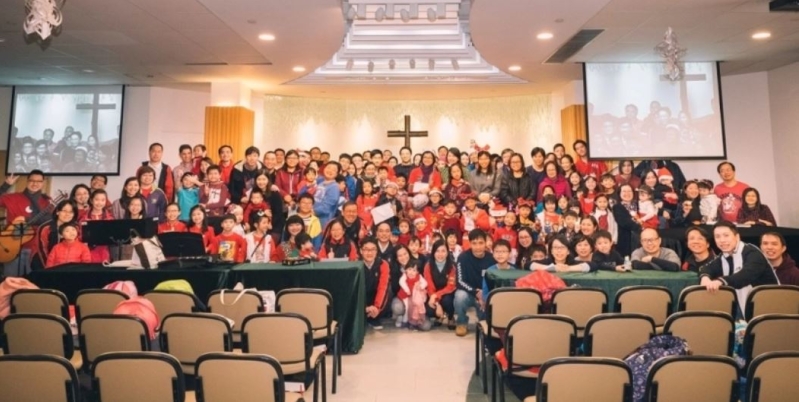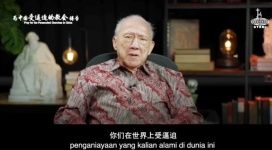
The Cantonese channel of the Mission Disciples podcast, produced by the Chinese Coordination Centre of World Evangelization (CCCOWE), discussed the theme of church renewal and revival on October 27. The featured guest, Rev. Shukyee Yau(游淑儀牧師), senior pastor of Tuen Mun Alliance Church(宣道會屯門堂), shared insights from her doctoral research on the phenomenon of “church turnaround” and explained how the concept of a “mission-shaped church” can lead to transformation.
Rev. Yau began by citing data from Church New 2024 Hong Kong Church Census, which reflects current challenges faced by Hong Kong churches—economic downturn, declining participation, and fewer pastors. Yet she noted that churches are expanding the gospel in new ways: 70 percent now collaborate with other churches or organizations, develop online worship, and make creative use of digital technology.
“A Mission-Shaped Church,” Not “A Church That Organizes Missions”
Rev. Yau emphasized that as the witness and glory of God, the church should not remain stagnant. Through her study of congregations that had once declined but later experienced renewal, she identified key factors behind their turnaround. The most essential concept, she said, is that “the mission shapes the church,” rather than “the church arranges the mission.” The two approaches lead in very different directions—the latter focuses on internal reinforcement but may not foster outward expansion.
“A mission-oriented church seeks to manifest God’s grace in every realm and level of life,” she explained. “It engages in holistic mission and undergoes a continual process of transformation.” She likened this to the Apostle Paul’s ministry in Acts, where he expanded the gospel into many cities even amid persecution, shaping the global church as we know it today. “The church on earth,” she summarized, “looks toward the coming kingdom of heaven. Such a mission-centered vision allows our work to expand without limit.”
In her research, Rev. Yau identified ten key principles for renewal and transformation. These include:
-
Equipping believers—empowering members from the bottom up to respond to God’s calling with inner spiritual vitality, through training that addresses real-world needs.
-
Relational connection—ensuring that small groups build genuine, mission-oriented relationships rather than merely inward fellowship.
-
Community service—continually developing new ministries that respond to the evolving needs of society.
-
Mission and outreach—focusing on transformation rather than maintenance.
All of these principles build upon the church’s past ministries as a foundation for deeper growth.
She further highlighted the principle of “strengthening strengths and supplementing weaknesses,” believing that every church is unique and should develop in its own way. “By maximizing our strongest areas,” she said, “we can bring balance to what is lacking—and all momentum must flow from the church’s sense of mission.”
Mission-Driven Community Transformation:
Tuen Mun Alliance Church’s Two-Decade Journey of Growth
With 32 years of pastoral experience at Tuen Mun Alliance Church, Rev. Yau has led the congregation from roughly 300–400 members to over 1,000 within two decades by embedding the “mission-shaped church” vision.
She recalled that in the 1990s, the church faced stagnation. Building on its long-standing focus on “community evangelization” and “discipleship of believers,” and integrating the Christian and Missionary Alliance’s core values of “spiritual vitality and mission commitment,” she developed practical transformation strategies. These included restructuring the church into cell groups and introducing progressive training through courses, seminars, and retreats to help believers move from new faith to maturity, discover their ministry callings, and generate internal motivation for renewal.
Over twenty years, the church developed more than twenty community service initiatives—most launched organically by members according to their gifts—creating a bottom-up service network. These projects address diverse needs: food distribution, health checks, fitness programs, cancer support ministry (“Grace and Healing Journey”), phone visitation and medical escort services, single-parent family care, dementia support, and special needs ministries. The church also runs gardening programs that help participants discover God’s creation through nature.
Even during the pandemic, the church did not decline. It expanded online worship and Bible courses, and formed a young multimedia team to support ministry operations. “When believers find joy in service,” Yau observed, “they avoid burnout and remain actively engaged, while pastors provide biblical guidance and support behind the scenes.”
The key, she stressed, is “to make the best use of our place to serve God more fully—not to waste our lives, but to serve with all we can.” This single-minded, mission-driven focus enabled the church to rebound from its low point.
In recent years, Rev. Yau has shared her experience with about 15 small and mid-sized churches facing limited resources, helping them develop customized growth plans with encouraging results. “Church turnaround takes time,” she concluded. “Pastors need faith amid stagnation—knowledge and empathy are both essential. We must do all we can to help, remembering that the true power of transformation comes from the Lord of the Church. And as mentors, we too are growing through the process.”







